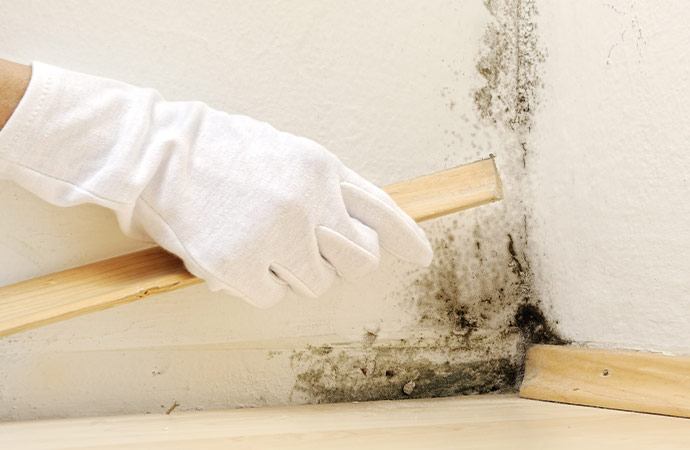After your home suffers water damage, you must act quickly to dry all affected areas. This goes beyond mopping up water or using a wet vacuum. Water can seep into several parts of your home—like the subflooring and behind walls—where the damage may go unnoticed for some time. Trapped water will continue deteriorating structural material, may produce a foul smell, and could lead to mold infestation.
Before any of that can happen, you need to begin the drying and dehumidification process immediately. Here are some of the ways drying water damage can save your home from a more expensive situation.
Prevent Mold & Bacteria Growth

If your floor, walls, and other affected areas are not properly dried, you run the risk of a mold outbreak. Even small amounts of water can produce mold growth. When it starts growing, mold can spread onto other surfaces and affect your indoor environment. However, drying out walls and flooring can help prevent mold from growing and get your home on track to return to the way it looked.
Extensive Damage to Your Home’s Structure
Several key components of your home’s structural integrity are vulnerable to water damage. Starting with the foundation, water can seep into cracks and worsen existing issues. Water can also weaken walls and rot your wood flooring, setting up the possibility of a collapse.
Advanced equipment can eliminate this threat by effectively drying out these areas and ensuring moisture doesn’t continue to damage structural material. A professional water damage specialist will know how to assess your property and deploy the right techniques to prevent worsening damage.
Costly Repairs
Porous materials in drywall and hardwood flooring will soak up moisture, causing deterioration, mold, and discoloration. But water can also reach other areas that may be near electrical outlets or appliances, insulation, and more. The longer water is left unchecked, the more damage it will inflict on your home. That means you’ll need extensive and expensive repairs. Avoid dipping deeper into your wallet—contact a professional water damage restoration company right away.
How Professional Drying Works
Professional drying starts with a thorough assessment of your home to identify the extent of damage and all affected areas. A specialist will use advanced equipment to detect moisture in walls and underflooring. They’ll remove furniture that was impacted by moisture and dry out any affected upholstery to prevent mold growth.
After removing furniture and upholstery, restoration specialists will set up advanced dry and dehumidifying equipment. Powerful fans will push air over affected areas and expedite the evaporation process. As the drying process continues, water from the walls and other surfaces will enter the air. That’s why restoration specialists use advanced dehumidifiers to ensure lingering moisture doesn’t continue affecting your home.
Water damage restoration specialists will continuously monitor your home for and measure moisture levels. This allows them to implement any necessary adjustments to the restoration process. Once everything is dry, the restoration specialist will repair the damage and move your dry furniture and upholstery back to where it was.
How Long Does It Take To Dry Out Water Damage?
It can take up to two weeks for your home to dry out on its own. But in that time, water can leave behind lasting damage that you and your family are at risk of living with mold and other health hazards. Even if the water came from a clean source, it can still severely damage walls, flooring, and furniture.
Don’t ignore water damage hoping it’ll resolve itself. Contact a water damage restoration company right away. They’ll make drying and reviving your property a top priority.
Call the Experts for Drying Water Damage
Northeast Power Dry specialists know how frustrating water damage can be for homeowners. That’s why our water damage restoration services are available 24/7. We work diligently to ensure all water is removed and your property is completely dried. Our priority is to get you and your family back into your home as quickly and safely as possible.
Homeowners in Bridgewater, Bound Brook, Edison, NJ, or the surrounding area should call us at 848-217-4742 or contact us online to request an on-site assessment.
Comments are closed.






Recent Comments